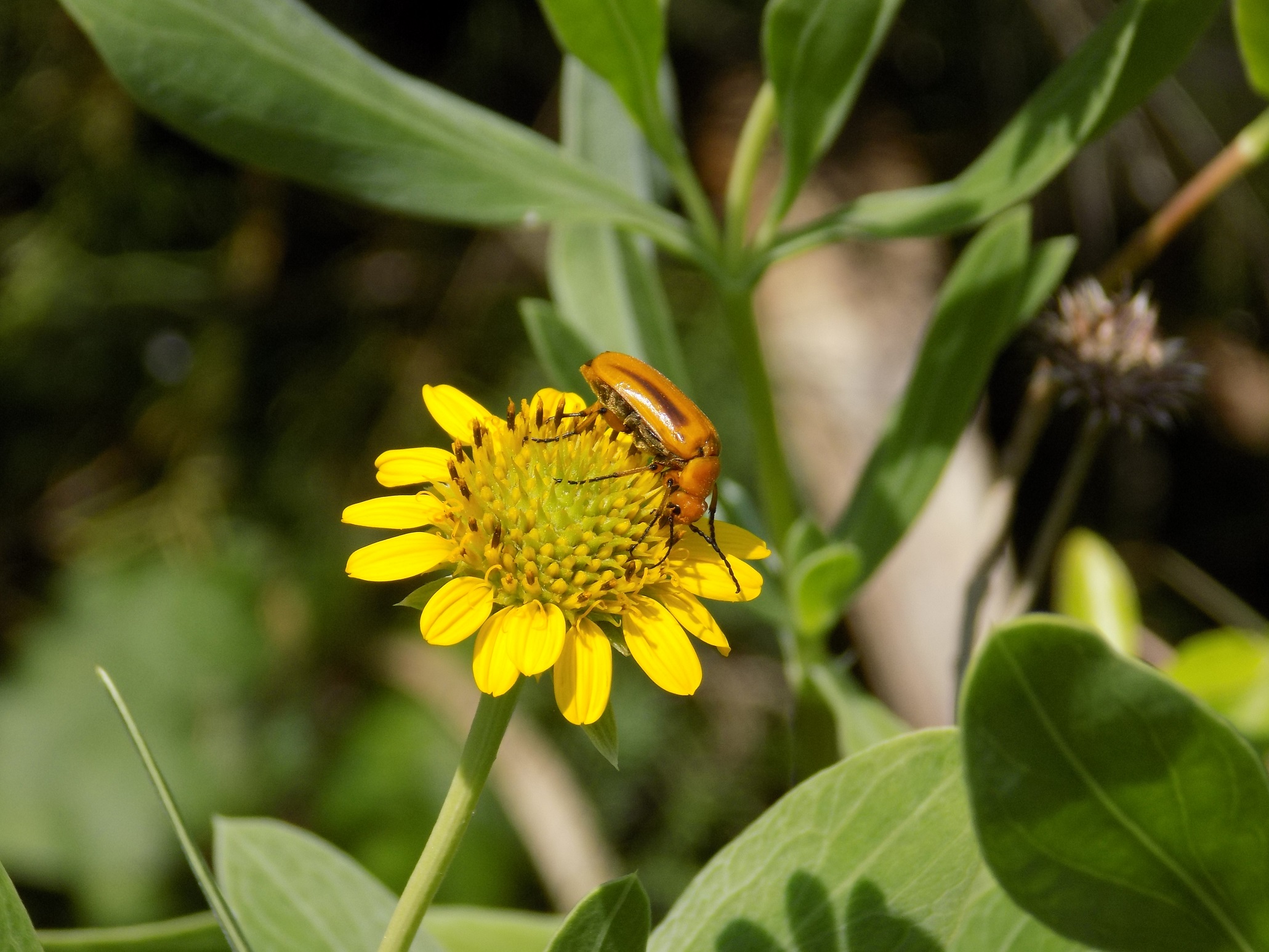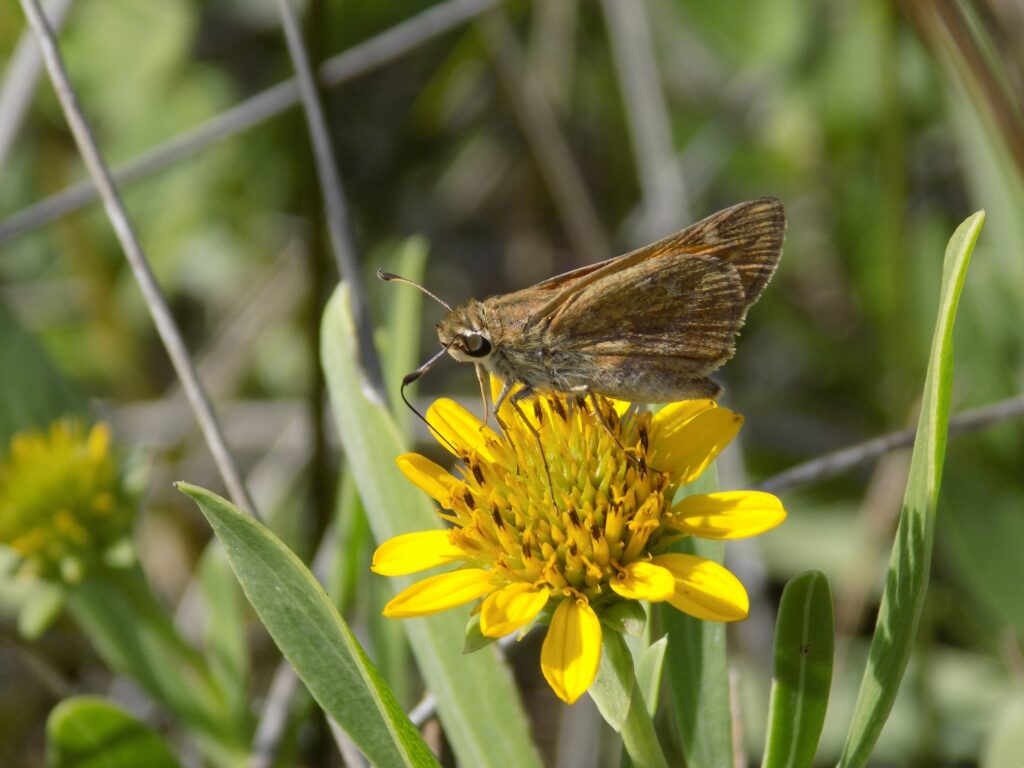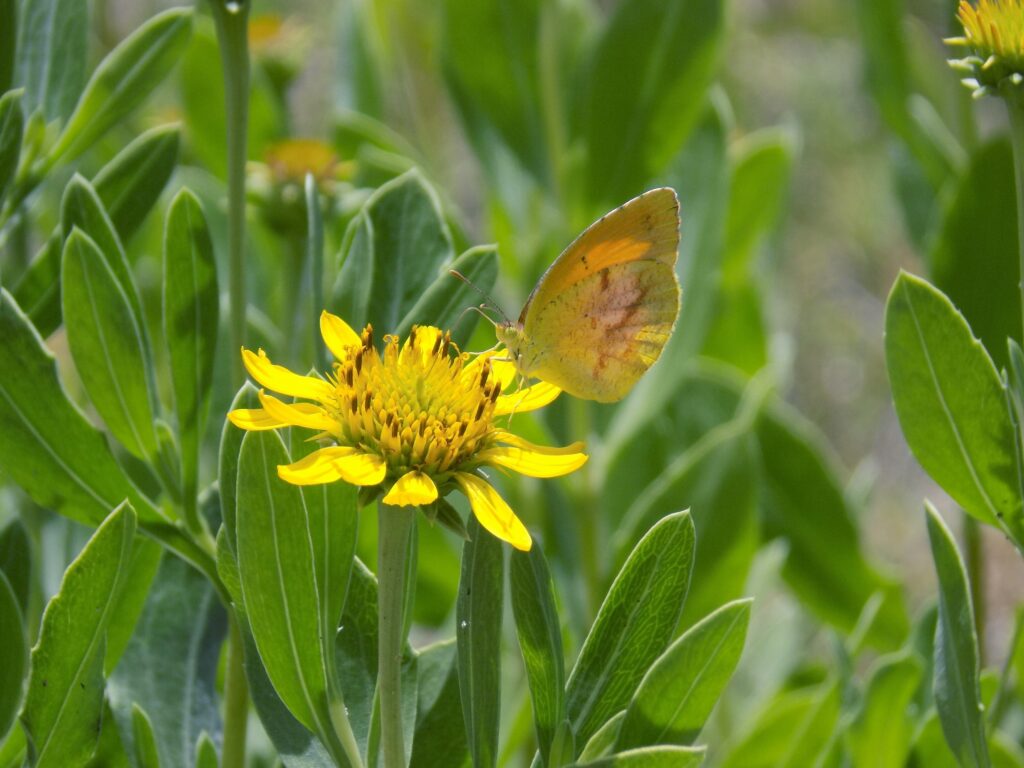


This week for Flora and Fauna Friday we have a salty succulent shrub that’s loved by bugs, Sea Oxeye (Borrichia frutescens).
Sea Oxeye is a member of the Aster family found on beaches, hammock islands, causeways, and high marsh habitats. It stands up to three feet high on a straight and gnarled perennial stem in the company of its clonal neighbors. Sea Oxeye grows in dense ribbons, bordering the coast of saline systems. Its supple stem and succulent silvery evergreen leaves are packed with water. This allow the plant to survive the harsh, hot climate in the sandy sodic soils of southern coasts. The salts of the saturated soil and periodic tidal inundation act to dry out the plant. So even though they may be growing in soggy soils, the plant nonetheless needs these drought tolerant adaptations.
Sea Oxeye flowers from spring through summer and is a sought after source of sugary nectar for many insects. Butterflies, Blister Beetles, and Bees abound down the corridors of yellow paved by our Oxeye. Their bloom is sunflower-like and not unsubstantial, with a wide disc ringed in rays of saffron. The flowers are prolific and robust and yield a dry spiny fruit. The fruit is firm and woody with a dome of thorny divisions. Their pincushion-esque fruit protects the profusion of seeds inside. Beneath each needle is seated a single seed. With wind and waves the stems are shaken and snapped, scattering the seeds to sow in the sand below. Sea Oxeye’s sparse and smooth-sided stems create small-scale savannas beneath their stratified canopy. Within this minute woodlot a myriad of marsh critters can conduct their day’s business safe from their skyward predators. Fiddler Crabs, Clapper Rails, Marsh Wrens, Marsh Rabbits, and Mink scurry, slalom, and sidle their way between the trunks whilst Rice Rats and Seaside Sparrows snack on the Sea Oxeye and Spartina seeds scattered beneath.